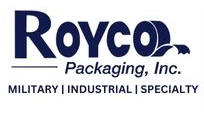In the vast world of commerce, one factor that often stands between a satisfied customer and a returned product is the quality of the packaging. Protective packaging isn’t just about aesthetics; it's about ensuring the product reaches the customer in its intended condition. As businesses expand and shipping becomes more intricate, understanding the value of protective packaging has never been more crucial.
The Value Proposition of Protective Packaging
At its core, protective packaging serves as a shield. It guards products against potential threats during transit or storage, be it physical damage, environmental factors, or even tampering. But the advantages of this type of packaging go beyond just protection:
- Enhanced Customer Satisfaction: When products reach customers in pristine condition, it naturally elevates their experience, leading to higher satisfaction and loyalty.
- Reduced Returns and Complaints: A significant portion of returns is due to products getting damaged during shipping. Quality packaging can significantly reduce these instances, saving both money and reputation.
- Branding and Image: The packaging often serves as the first physical interaction a customer has with a brand. Quality protective packaging sends a message about the brand's commitment to quality.
The Elements of Effective Protective Packaging
Not all packaging solutions are created equal. The effectiveness of a packaging strategy depends on several factors:
- Material Selection: The choice of materials, from corrugated cardboard to bubble wrap and foam inserts, plays a crucial role. The material should offer adequate protection while being environmentally conscious and cost-effective.
- Design and Structure: It's not just about what the packaging is made of but also how it's designed. Considerations about the product's shape, weight, and fragility all influence the design of effective protective packaging.
- Customization: Every product is unique, and sometimes off-the-shelf solutions might not suffice. This is where customer packaging comes into play, tailoring the packaging solution to the specific needs of the product.
Strategies to Minimize Losses with Protective Packaging
Minimizing losses in business isn't solely about reducing operational costs or enhancing sales strategies. A significant portion of losses, often overlooked, stems from damaged products, returns, and customer dissatisfaction due to inadequate packaging. Let's explore in depth how protective packaging acts as a bulwark against these losses.
Broader Implications in the World of All Packaging
While protective packaging is essential, it's just one component in the broader spectrum of all packaging. Brands need to consider sustainability, aesthetics, and even marketing when designing their packaging strategies. However, regardless of the objective, the underlying principle remains consistent: the packaging should add value, either by protecting the product, enhancing brand image, or conveying essential information.
Challenges in Implementing Protective Packaging
Despite its clear advantages, transitioning to high-quality protective packaging isn't always straightforward. Businesses often grapple with increased costs, environmental concerns, and the challenge of balancing protection with presentation.
Furthermore, as e-commerce continues to grow, the dynamics of packaging are changing. Products now undergo more handling, transitioning through multiple points before reaching the end consumer. This shift necessitates even more robust and efficient packaging solutions.
The Future of Protective Packaging
With advances in technology and materials science, the future of protective packaging looks promising. Innovations are already underway, focusing on sustainable materials, smart packaging that can indicate tampering or damage, and even designs optimized for automation and robotics.
Furthermore, as consumer awareness about environmental issues grows, businesses will face pressure to implement eco-friendly packaging solutions. This push will shape the future direction of protective packaging, marrying protection with sustainability.
Making Packaging More Efficient
In the intricate dance between product and customer, protective packaging plays a pivotal role. It ensures that products, whether fragile electronics or perishable goods, navigate the complex journey from production to the consumer's hands safely and efficiently.
For businesses aiming to make a lasting impression and minimize losses, investing in protective packaging is not just an option; it's a necessity. Recognizing its value and implementing it effectively can be the key differentiator in today's competitive market.
